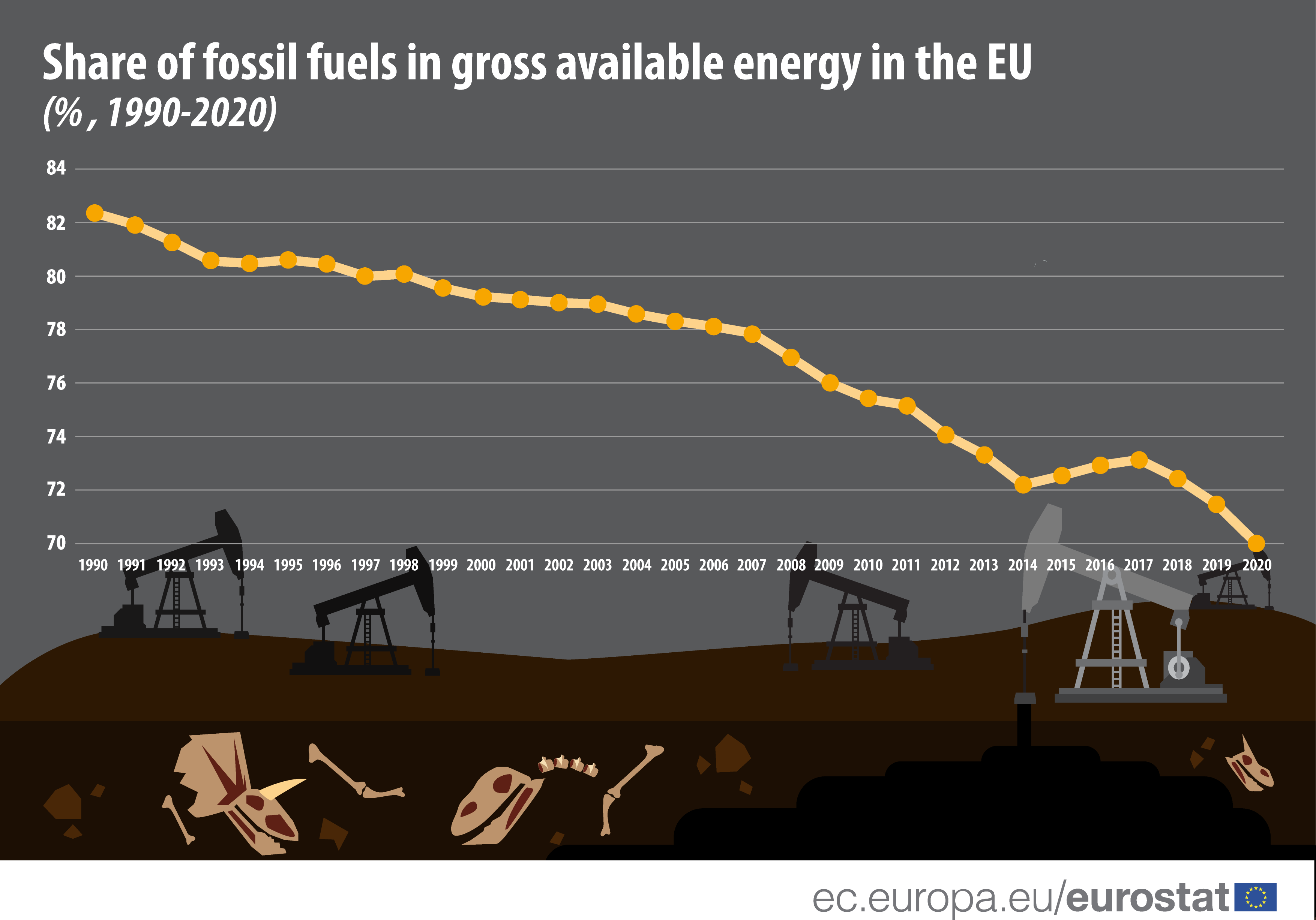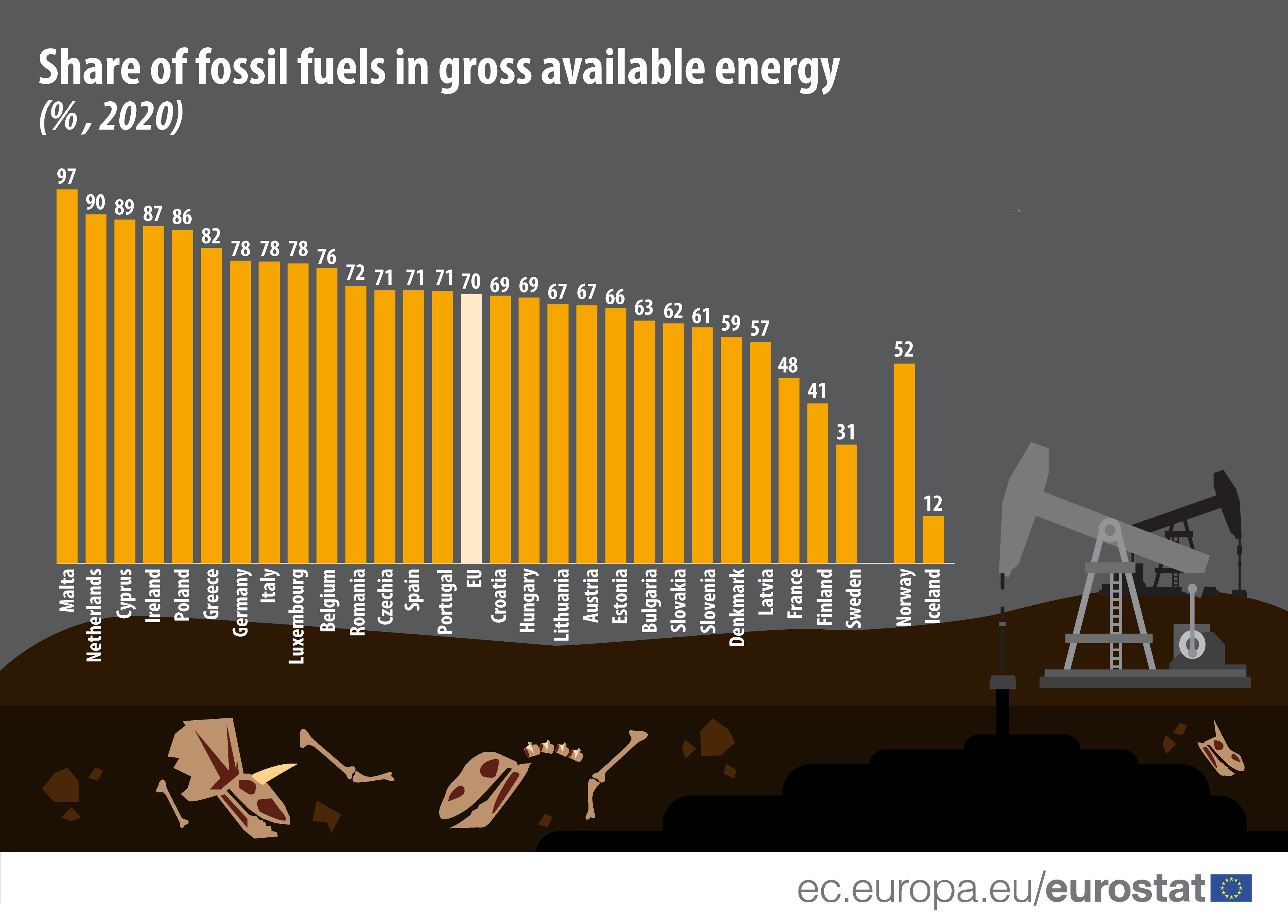In the EU, we still largely rely on fossil fuels for our overall energy supply, illustrated by the ratio of fossil fuels in gross available energy (the total energy demand of a country or region). In 2020, fossil fuels made up 70% of gross available energy in the EU, down from 71% in 2019. This percentage has decreased significantly over the last decades; -13 percentage points (pp) since 1990, the first year for which data are available. This is mostly due to the increase in renewable energy.
Source dataset: nrg_ind_ffgae
In 2020, Malta (97%) was the EU Member State with the highest share of fossil fuels in gross available energy followed by the Netherlands (90%) and Cyprus (89%), Ireland (87%), and Poland (86%). Most of the other Member States had shares between 60% and 85%. Only Sweden (31%), Finland (41%), France (48%), Latvia (57%) and Denmark (59%) had shares below 60%.
Source dataset: nrg_ind_ffgae
Over the past decade, all the EU Member States registered a decrease in their share of fossil fuels in gross available energy. The largest decrease was measured in Estonia (from 91% in 2010 to 66% in 2020; -25 pp), followed by Denmark (from 81% to 59%; -22 pp) and Finland (from 57% to 41%; -16 pp). On the other hand, the smallest decrease was measured in Belgium (from 78% to 76%; -2 pp), followed by Germany (from 81% to 78%; -3 pp) and Malta (from 100% to 97%; - 3 pp).
Comparing 2020 with 2019, only two EU Member States increased their share of fossil fuels in gross available energy; Lithuania (+1 pp) and, just marginally, Malta (+0.1 pp). Belgium’s figures remained the same. Among the other countries, the largest decreases were in Estonia (-7 pp), Denmark (-5 pp), followed by Portugal, Latvia, Spain, Bulgaria and Luxembourg (all -4 pp).
For more information:
- Gross available energy means the overall supply of energy on the territory of the country. This includes energy transformation (including generating electricity from combustible fuels), distribution losses and use of fossil fuel products for non-energy purposes (e.g. in the chemical industry). It also includes fossil fuel used for transport, including fuel purchased within the country that is used elsewhere (e.g. international aviation, international maritime bunkers and, in the case of road transport “fuel tourism”).
- Eurostat methodology for energy balances (calculation of gross available energy)
- Eurostat dedicated section on energy
- Eurostat database on energy
To contact us, please visit our User Support page.
For press queries, please contact our Media Support.



